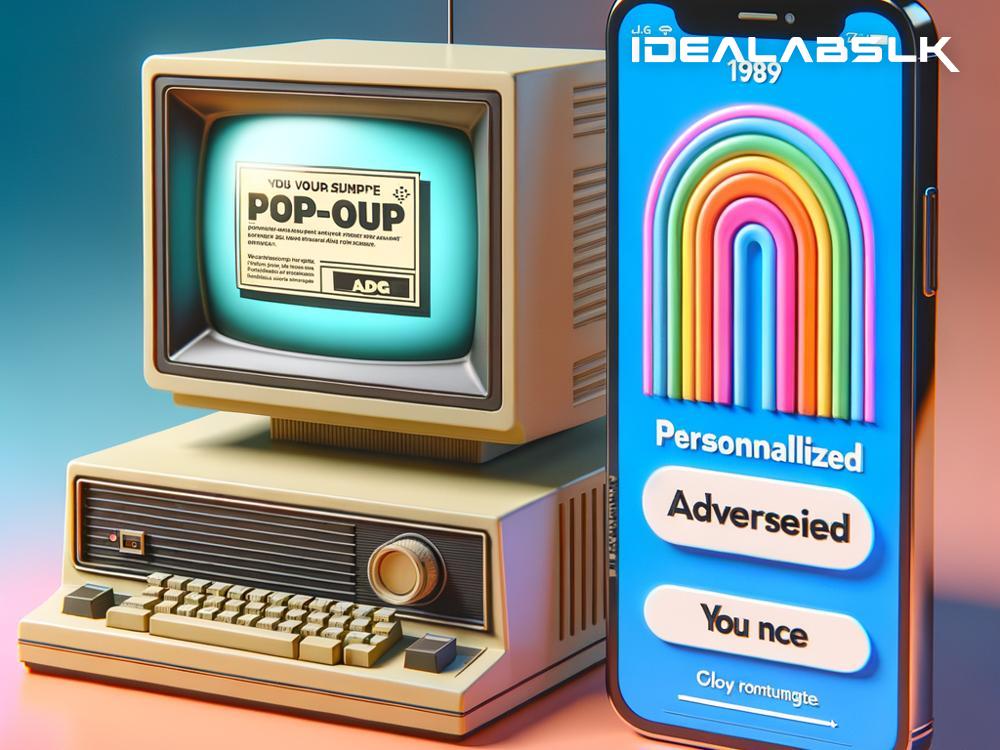The Birth of Digital Advertising: From Pop-Ups to Targeted Ads
Think about the early days of the internet. It was like a new frontier, ripe with possibilities. Among these possibilities was the birth of digital advertising, a game-changer in how businesses reached their audience. This journey, from the irritating pop-up ads to today's more sophisticated targeted ads, is a fascinating evolution.
When you traveled back to the mid-90s, internet usage was skyrocketing. This period marked the dawn of digital advertising. Businesses quickly recognized the internet as a goldmine for reaching potential customers. And so, one of the earliest forms of digital ads was born: the pop-up ad.
Imagine you're surfing the web, and suddenly, a new window pops up in front of the page you were viewing. That's a pop-up ad. They were designed to grab your attention, but often, they did so in the most annoying way possible. Pop-up ads were like the pesky flies of the internet: no matter how many times you swatted them away, they seemed to come back with a vengeance.
Despite their irritation, pop-up ads were effective—at first. However, their intrusive nature led to a backlash. People were frustrated, looking for ways to avoid these digital nuisances. This led to the creation of pop-up blockers, software designed specifically to prevent these ads from appearing. By the early 2000s, the effectiveness of pop-up ads was declining rapidly.
But the world of digital advertising was far from defeated. As technology advanced, so did the strategies for reaching consumers online. Enter targeted advertising, the sophisticated descendant of the pop-up ad.
Unlike its predecessor, targeted advertising uses data and algorithms to display ads that are relevant to the user's interests, behaviors, and demographics. This method is far less intrusive and often more welcome because it feels more personalized and less random.
Think of it like this: if you're a cat lover who frequently searches for cat videos and products, targeted advertising might show you ads for a new cat toy or a sale on cat food. It's like the internet is getting to know you, showing you things it thinks you might like or need.
This transition from pop-up ads to targeted ads didn't happen overnight. It involved significant advancements in data collection and analysis, as well as changes in user behavior. People started spending more time online, sharing more about their interests, and engaging with content in new ways. Social media platforms and search engines collected vast amounts of data, which became the foundation for targeted advertising.
Today, targeted ads are everywhere, from social media feeds to search engine results pages. They're more nuanced and sophisticated than ever, sometimes so well integrated that you might not even recognize them as ads. They can also be based on your physical location, thanks to GPS technology, making them even more relevant (or sometimes, eerily so).
The evolution from pop-up ads to targeted ads reflects a broader shift in digital marketing towards more personalized, user-centric approaches. Instead of shouting messages at everyone and hoping someone listens, digital advertising now involves more listening to what the audience wants and responding in kind.
However, targeted ads aren't without controversy. Privacy concerns have been raised about how much personal information is collected and how it's used. Laws and regulations, like the EU's General Data Protection Regulation (GDPR), have been introduced to protect user privacy. Moreover, some people find even targeted ads intrusive and look for ways to limit tracking and ad targeting.
In conclusion, the journey from pop-up ads to targeted ads is a testament to how digital advertising has evolved and will continue to evolve. It reflects not only technological advances but also changing attitudes towards privacy, consumer behavior, and advertising effectiveness. As we look to the future, the question isn't just about how advertisers can get more sophisticated in reaching their audience, but also how they can do so ethically and sustainably. The story of digital advertising is still being written, and its next chapters promise to be just as fascinating as its past.

